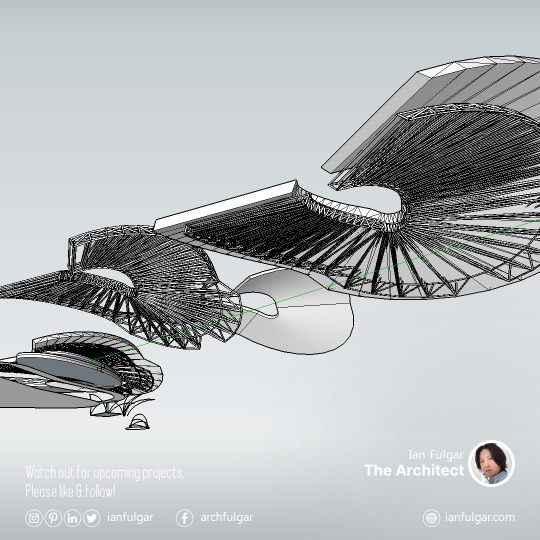#ComputationalThinking
Explore tagged Tumblr posts
Text
Importance of computational thinking in problem-solving
Computational thinking is a revolutionary skill that enhances problem-solving by breaking complex issues into manageable parts. It involves logical reasoning, pattern recognition, algorithmic thinking, and abstraction to develop efficient solutions. This skill is essential in the digital age, benefiting fields like programming, data analysis, and AI. By mastering computational thinking, individuals can improve decision-making, automate tasks, and innovate effectively.

0 notes
Text
Benefits of Computational Thinking

Computational thinking is a vital skill in today’s technology-driven world, empowering kids to approach problems like a computer scientist. This mindset involves breaking down complex problems into manageable parts, recognizing patterns, and developing step-by-step solutions skills that are applicable far beyond coding. For kids, computational thinking enhances critical thinking, allowing them to tackle challenges methodically and creatively. It also fosters problem-solving skills, helping them approach issues logically and efficiently. Moreover, it encourages perseverance, as children learn to iterate and refine their solutions, building resilience in the face of setbacks. Beyond academics, computational thinking promotes a growth mindset, encouraging kids to see challenges as opportunities to learn. As they apply these skills to real-world scenarios, they become more adept at navigating the complexities of modern life, setting a strong foundation for future success in any field.
#ComputationalThinking#CriticalThinking#ProblemSolving#FutureSkills#STEMEducation#GrowthMindset#21stCenturySkills#InnovativeThinking#LogicalThinking
1 note
·
View note
Text
PYTHON PROGRAMMING INSTITUTE IN MUNIRKA GSCE
"Unlock the world of coding and computation with our Python Programming course in Munirka, designed specifically for GSCE students. Python, known for its simplicity and versatility, is the perfect language to kickstart your programming journey.
In this course, we cover the fundamentals of Python, guiding you through the syntax and concepts needed to create programs, analyze data, and build exciting projects. With a focus on hands-on learning, you'll gain the skills required to excel in your GSCE exams and beyond.
#PythonProgramming#GSCEPrep#CodingForBeginners#LearnPython#ProgrammingJourney#MunirkaInstitute#TechEducation#CodingSkills#HandsOnLearning#ComputationalThinking#PythonForExams
0 notes
Photo

Halls of Learning in association with Oxford University proudly presents The Oxford University Computing Challenge: JAMAICA ▫️ A FREE online competition for talented Jamaican students in grades 4-12 to solve computational thinking problems using computer code and programming ▫️ Grades 4-6 compete at the Junior level Grades 7-9 compete at the Intermediate level Grades 10-11 compete at the Senior level Grade 12 competes at the Elite level ▫️ 1st prize for each category is a Gaming Laptop ▫️ Round 1 starts May 24, 2021, details to follow ▫️ Sponsored by SEPROD FOUNDATION ▫️ Reposted from @wrojamaica #scholarshipjamaica #wrojamaica #jamaica #coding #computationalthinking (at ScholarshipJamaica.com) https://www.instagram.com/p/CO0fIhLhsGM/?igshid=vagwn0usvbx4
1 note
·
View note
Text
What is Computational Thinking in 2023?

In the rapidly evolving digital era of 2023, computational thinking has emerged as a vital skillset for problem-solving. Rooted in computer science principles, it goes beyond coding, offering a structured approach to tackle complex challenges. In this blog, we will explore what is computational thinking in 2023 and its significance in various domains.
Definition and Approach:
Computational thinking involves breaking down complex problems, identifying patterns, and developing step-by-step strategies. It emphasizes logical reasoning, algorithmic design, and automation to arrive at effective solutions.
Trans disciplinary Applications:
Computational thinking is no longer confined to computer science; it has transcended disciplines. In 2023, it plays a crucial role in science, engineering, mathematics, arts, and social sciences, enabling professionals to analyze data, optimize processes, and develop innovative solutions.
Critical Thinking and Creativity:
Computational thinking fosters critical thinking and creativity. It encourages individuals to approach problems from different angles, evaluate multiple solutions, and think beyond traditional boundaries.
Collaboration and Ethical Considerations:
Computational thinking promotes collaboration, effective communication, and teamwork. It also highlights the importance of ethical practices in designing responsible solutions.
Conclusion:
In 2023, computational thinking has become an essential skillset, empowering individuals to navigate complex challenges across various domains. Its problem-solving approach, emphasis on critical thinking, and trans disciplinary applications enable individuals to thrive in the dynamic digital landscape of today and the future.
0 notes
Photo

Computational design technologies have been a relatively recent development in the world of architecture. These technologies allow architects to use visual programming languages such as Grasshopper, Dynamo, and Blueprint to generate architectural forms. #design #bim #designer #designideas #computationaldesign #bimmerlife #architectureanddesign #designoftheday #architecturemodel #designprocess #computational #computationalthinking #computationalart #computationalarchitecture #computationallinguistics #designarchitecture #architect #parametricdesign #parametricarchitecture #rhinoceros3d #inspiration #likes #beauty #designthinking #digitaldesign #creativedesign #form #architecturalform https://www.instagram.com/p/Ccy1D1LoChV/?igshid=NGJjMDIxMWI=
#design#bim#designer#designideas#computationaldesign#bimmerlife#architectureanddesign#designoftheday#architecturemodel#designprocess#computational#computationalthinking#computationalart#computationalarchitecture#computationallinguistics#designarchitecture#architect#parametricdesign#parametricarchitecture#rhinoceros3d#inspiration#likes#beauty#designthinking#digitaldesign#creativedesign#form#architecturalform
0 notes
Text
A Revaluation of Computational Thinking in K–12 Education: Moving Toward Computational Literacies
Yasmin B. Kafai and Chris Proctor
First, this article introduces the background and the development of CS in K12 education system.
Why? maintain each country's economic competitiveness (Hsu et al., 2019) but also to develop a new cross-disciplinary literacy
Three framings of computational thinking:
(gradually become more comprehensive and inclusive)
1) cognitive framings: viewing learning as the acquisition of knowledge and skills and emphasizing preparation for future careers.
limitations: students learning outcomes are seen mostly in individualistic terms, paying little attention to how learning is embedded in social and cultural context (Lave & Wenger, 1991).
2) situated framings: viewing learning as identity formation through participation in disciplinary practices and emphasizing creative expression and social engagement in digital media.
Some researchers (e.g., Vakil, 2018) argue that situated computational thinking does not go far enough in confronting forces such as racism and sexism.
3) critical framings: viewing learning as developing an understanding of how realities are shaped and emphasizing strategies for resisting marginalization and oppression.
Moving Toward Computational Literacies (CL)
we define computational literacies as a set of practices situated in a sociocultural context which utilize external computational media to support cognition and communication.
WHOM? CS is for everyone?
While learning CS may benefit everyone, it may also become media to limit or marginalize others, just like standard English. Thus, we are interested in how youth from non-dominant communities employ digital tools to navigate these tensions and to develop agentic practices that in turn signify historical action.
WHAT?
defining literacies means defining who is literate and which practices (always bound up in cultures, places, and identities) are legitimate.
have many answers grounded in the computational literacy practices of diverse communities and cultures.
HOW?
tailoring instruction to make it relevant to diverse cultures and identities (as suggested by the metaphor of a “leaky pipeline” of STEM education) without also locating educational goals in those cultures and identities, and then asking how (or if ) computation might con-tribute.
Priorities for K–12 Inquiries
call for more research in understanding of how K–12 students engage with various computational concepts and practices and possible trajectories of how they deepen their understanding, keeping in mind alternate endpoints of what it means to be CL.
call for the development of transformative pedagogies to address political and ethical implications in teaching CS, as well as the inadequacy of simply adding an ethics module to the curriculum.
a necessity to make headway in assessing computational literacies at different scales.
tackle the key challenge of including computing education in teacher education programs (DeLyser et al., 2018) as part of the larger education system.
Implications:
This article discusses the meaning and necessity of applying CL into K12 education field. It also gave us clear instructions on whom, what and how. Generally speaking, there is no standard answer to these questions to prevent marginalizing some people, and the specific situation is analyzed on a case-by-case basis. Thus, it gives us a direction for future research and education, that is, to explore a specific method of CL pedagogy in our own specific cultural context.
1 note
·
View note
Text
What are the Components of Computational Thinking

Computational thinking is a fundamental skill applicable beyond computer science. IIt is useful for everyday decision-making as well as for disciplines like mathematics, physics, and engineering. By promoting structured problem-solving, logical reasoning, and adaptability, computational thinking equips individuals to address complex challenges in our increasingly technology-driven world.
Key components of computational thinking include:
Decomposition: It involves breaking a problem into smaller subproblems or components, making it more manageable.
Pattern Recognition: Identifying recurring patterns, trends, or regularities within data or problems to facilitate understanding.
Abstraction: Removing unnecessary details while retaining essential information to create simplified models of problems.
Algorithmic Thinking: Developing step-by-step procedures (algorithms) to solve problems or perform tasks efficiently.
Debugging: Identifying and correcting errors or issues in solutions to improve their functionality.
#ComputationalThinking#ProblemSolving#LogicalThinking#STEMEducation#CriticalThinking#CodingSkills#LogicalSolutions#ProblemSolvers#ComputationalSkills#FutureSkills
1 note
·
View note
Video
instagram
Self-Shaping Truss - work by @yasitahouni @tiffyuting @dmwoo , Renate Sachse, Rebecca Thierer, Manfred Bischoff and Achim Menges for ICD University of Stuttgart @icdstuttgart --- Check out this small scale self-shaping truss as part of our paper and presentation: Self-shaping Curved Folding: A 4D-printing method for fabrication of self-folding curved crease structures, at the Symposium on Computational Fabrication 2020! _ _ _ _ _ _ _ _ _ _ _ _ _ _ _ _ _ _ _ _ _ _ _ _ Follow @archdlofficial for more! 🖤 Tag #archdl or DM your works for Featuring! . . . . . . . . . . . . #archolution #arch_grap #architonic #wisearchi #illustarch #next_top_architects #archlibrary #arch_more #archlovers #archistudent #grasshopper3dwork #architecture #architecturedesign #architecturestudent #grasshopper3d #architecture_hunter #grasshopper3d #rhino3d #computationalthinking #computationaldesign #speculativedesign #zahahadid #parametricdesign #parametricarchitecture #parametricmodeling #blenderarchitecture #fabrication #conceptart #materialprogramming (at Boston University) https://www.instagram.com/p/CNuGrrInehP/?igshid=1vbatno9x79zx
#archdl#archolution#arch_grap#architonic#wisearchi#illustarch#next_top_architects#archlibrary#arch_more#archlovers#archistudent#grasshopper3dwork#architecture#architecturedesign#architecturestudent#grasshopper3d#architecture_hunter#rhino3d#computationalthinking#computationaldesign#speculativedesign#zahahadid#parametricdesign#parametricarchitecture#parametricmodeling#blenderarchitecture#fabrication#conceptart#materialprogramming
0 notes
Text
What is Computational Thinking in 2023?

Computational Thinking in 2023 is a way of understanding and solving complex problems through the use of algorithms, data structures, and other software engineering principles. It is an interdisciplinary approach that combines mathematical, logical, and creative thinking to arrive at solutions to problems. It involves breaking a problem down into smaller components, developing strategies, and analyzing data to discover patterns and uncover insights.
2023 is an exciting time for computational thinking. With the rapid development of technology, computational thinking will be used to solve many of the problems we face.
Here's a list of some of the ways computational thinking will be used in 2023:
Data analysis: crunching large data sets to uncover relationships and patterns.
Artificial intelligence: designing algorithms to recognize patterns and make decisions.
Machine learning: creating algorithms to learn from data and improve performance over time.
Robotics: programming robots to carry out complex tasks.
Automation: developing systems to streamline processes and reduce human effort.
Cybersecurity: building secure systems to protect digital data and privacy.
Programming: writing code to create software applications.
Visualization: creating visual representations of data to aid decision-making.
Computational thinking is a powerful tool that will help us tackle the challenges of the future.
0 notes
Video
instagram
My little first graders learning to code with Robot Turtles! Someone was a little grumpy because she didn’t want to wait for her turn 😂 @thinkfun #stem #codingheroes #coding #stemkids #criticalthinkingskills #21stcenturyskills #korea #busan🇰🇷 #boardgame #computationalthinking (at Busan, South Korea)
#codingheroes#stemkids#computationalthinking#criticalthinkingskills#stem#21stcenturyskills#busan🇰🇷#boardgame#coding#korea
1 note
·
View note
Photo

City life apartments - Milan, Italy By zahahadidarchitects For more Wonderful Updates follow @designstudio_mag #rendering #rhinoceros3d #maqueteeletronica #arch_impressive #thebestnewarchitects #computationalthinking #architecturalvisualization #thearchiologist #arqdesign #architecturevisualization #showitbetter #arqeurbarcharchitectarcharcharchitectarchitectarchitectural #parametric #generative #parametricism #arquiteturaparametrica #archisource #grasshopper3d #archimodel https://www.instagram.com/p/CHmiTBPlKl-/?igshid=ucle7j4wl2h3
#rendering#rhinoceros3d#maqueteeletronica#arch_impressive#thebestnewarchitects#computationalthinking#architecturalvisualization#thearchiologist#arqdesign#architecturevisualization#showitbetter#arqeurbarcharchitectarcharcharchitectarchitectarchitectural#parametric#generative#parametricism#arquiteturaparametrica#archisource#grasshopper3d#archimodel
0 notes
Text
What is Computational Thinking(CT)?
Before reading:
At first, I thought CT is about mathematic thinking mode, then I revised it as a logic that apply to computer science (or the coding logic). I thought it as a tool to solve specific problems.
In the first class, Dr. Chris told us that CT is a way to understand the world and a thinking method to solve the problem. It's beyond a tool. It's a model of thought and it can form our second self which reflect who you are and the nature of you being. Then I found that it's similar as the learning process of second language. If you have experience learning a second or third language, you will find that the structures and cultures under these new languages can subtly influence the way you think and form your second self.
Take my own learning experience of English and Japanese as an example. Compared with Chinese, English pays more attention to logic and direct expressions. Through a few key words, the meaning of the person can be basically determined. I feel more confident and emotional when I express myself in English than in Chinese. It makes me feel that English thinking has shaped me into another personality. I don't know if my original character has changed or if I have a different character in different situations. Compared to Chinese and English, Japanese has many rules and honorifics. I feel humble when I speak Japanese (just learned a little of it). I think ritual seems to be particularly emphasized in Japan.
Furthermore, I find that everything I want to solve can be embodied here. Expectations such as minimizing the gaps, promoting equality, forming identity, promoting diversity can all addressed here.
1 note
·
View note
Text
How Can Coding Help in Maths for Kids?

Coding and mathematics are closely related, here are some ways to how can coding help in maths for kids.
Logic and problem-solving: Coding involves breaking down complex problems into smaller, more manageable parts. This is also a key component of mathematical problem-solving. Learning to code can help kids develop their logical thinking and problem-solving skills, which they can apply to math problems.
Visualization: Many coding concepts involve working with visual representations of data and algorithms. This can help kids to develop their spatial reasoning skills, which are important for understanding mathematical concepts like geometry and trigonometry.
Computational thinking: Coding requires a structured and algorithmic approach to problem-solving. This type of thinking can also be applied to mathematical concepts like algebra and calculus. By learning to code, kids can develop their computational thinking skills and apply them to math problems.
Practice: Coding involves a lot of practice and repetition. This can help kids to develop the same skills that are required for practicing math problems. By practicing coding, kids can develop their problem-solving skills, attention to detail, and perseverance - all of which are important for learning math.
Fun and engagement: Learning to code can be a fun and engaging way to learn math. Kids can use coding to create games and simulations that involve math concepts, which can help them to understand these concepts in a more interactive and engaging way.
Overall, coding can be a great tool for helping kids to improve their math skills. By developing their logical thinking, problem-solving skills, spatial reasoning, computational thinking, and practice habits, kids can become better mathematicians and coders at the same time.
#codingmathematics#codingforkids#mathskills#computationalthinking#logicandproblemssolving#visualization#STEMeducation#codingeducation#edtech#mathfun
0 notes
Photo

Posted @withregram • @membranaparametrica Estudo para uma Torre Residencial Multifamiliar . 🖱 Design: @ema_arquitetura 📷 Fotografia: @felipebezerra 🗺 Local: Recife, Brasil —————————————————— 🔭 Inspiração Diária 0349, Post por @henridsgn . 📡Siga e poste também na Hashtag #membranaparametrica . 🦎 O que é o Membrana Paramétrica? www.membranaparametrica.com/sobre/ —————————————————— // Post Hashtags // #renderização #rhinoceros3d #maqueteeletronica #arch_impressive #renderoftheday #computationalthinking #architecturalvisualization #arqdesign #architects_need #showitbetter #designarquitetonico #archisource #grasshopper3d #archimodel #arqeurb #arch_grap #whatarender #estudantedearquitetura #faculdadedearquitetura #archviz #illustrarch #arqlovers #architectureau #archvisuals #parametric #renderlovers #parametricism #arquiteturaparametrica https://www.instagram.com/p/CEK9LrPJyV7/?igshid=sthlxthz9srs
#membranaparametrica#renderização#rhinoceros3d#maqueteeletronica#arch_impressive#renderoftheday#computationalthinking#architecturalvisualization#arqdesign#architects_need#showitbetter#designarquitetonico#archisource#grasshopper3d#archimodel#arqeurb#arch_grap#whatarender#estudantedearquitetura#faculdadedearquitetura#archviz#illustrarch#arqlovers#architectureau#archvisuals#parametric#renderlovers#parametricism#arquiteturaparametrica
0 notes